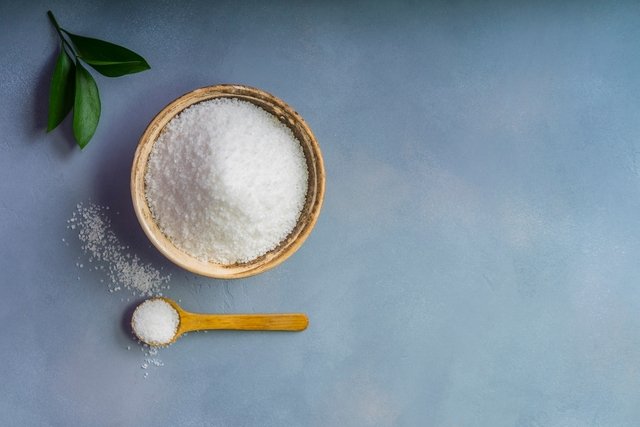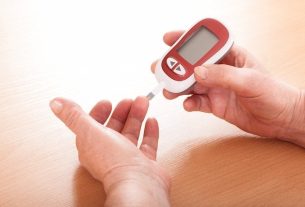Sodium is a fundamental mineral for the body’s functions, as it balances the quantity and distribution of water in the body, thus helping to regulate blood pressure.
In addition, sodium is also essential for electrical impulses in the nervous system, muscle contraction, blood pH balance and the absorption of nutrients such as vitamins, glucose and amino acids.
Sodium is mainly found in sodium chloride, known as table salt. Furthermore, this mineral can also be present in processed foods, such as processed meats, preserves and ready-made sauces. See other processed foods rich in sodium.

What is it for
Sodium is essential for maintaining the body’s functions, the main ones being:
- Regulate blood pressure, as it balances the quantity and distribution of water entering and leaving the cells;
- Promote nutrient absorptionbecause it allows the entry of glucose, vitamins and amino acids into cells;
- Stimulate nerve impulsesallowing the transmission of information between the cells of the nervous system and the entire body;
- Help with muscle contractionas a large amount of sodium is transported into muscle cells, stimulating muscle and heart contraction;
- Balance blood pHwhich is essential for the proper functioning of the body’s cells.
Although it is an essential mineral for the body, excessive sodium consumption is harmful to health and can cause diseases such as high blood pressure, heart attack and stroke.
Sodium source foods
Sodium chloride, or table salt, is the food that contains the highest amounts of sodium. This mineral can also be found, in smaller quantities, in foods such as meat, eggs, milk and dairy products, fish and seafood, algae and beetroot.
Furthermore, sodium can also be found in large quantities in processed products, such as smoked meats, soft drinks, ice cream, ready-made sauces, cubed seasonings, biscuits, pickled vegetables and fast-food meals, for example. Learn about other processed foods that contain sodium.
Recommended daily intake
The recommended daily sodium intake per day varies according to the person’s age, as explained below:
- From 0 to 6 months: 110 mg;
- From 7 months to 1 year: 370 mg;
- From 1 to 3 years old: 800mg;
- From 4 to 8 years old: 1000mg;
- From 9 to 13 years old: 1200mg;
- From 14 years old onwards: 1500 mg.
Furthermore, the World Health Organization recommends a maximum intake of 5g of salt per day, which is equivalent to approximately 2g of sodium, to help prevent the emergence of cardiovascular diseases, such as high blood pressure, heart attack and stroke.
When Sodium Gets High or Low
Some situations, such as vomiting, diarrhea, excessive sweating or kidney failure, can alter sodium levels in the blood.
The ideal sodium values range between 135 and 145 mEq/L, which can be verified through a blood test to measure this mineral.
High sodium
High sodium in the blood, known as hypernatremia, is a condition that can occur due to situations that cause the body to lose water, such as diarrhea, vomiting, excessive sweating and diseases that increase the volume of urine, such as diabetes insipidus or kidney problems.
In most cases, high blood sodium does not cause symptoms. However, when the change is very severe, some symptoms may appear such as increased thirst, drowsiness, increased muscle contractions and convulsions.
Low sodium
Low sodium, or hyponatremia, is a decrease in sodium in the blood that can be caused by situations that reduce the elimination of water by the body or that increase the volume of water in the blood, such as excess blood sugar, kidney failure, use of some medications and excessive fluid consumption.
Low sodium in the blood can cause symptoms such as headache, nausea and drowsiness. Additionally, if left untreated, excess sodium in the blood can also cause seizures and coma.
Tips to avoid excess sodium
Excessive sodium intake can cause some health problems such as high blood pressure, stroke, heart failure and heart attack, for example. Therefore, some tips to avoid excessive sodium consumption in your diet are:
- Avoid soft drinks and juices from boxes or bottles;
- Reduce the amount of salt added to meals;
- Avoid processed meats, such as sausage, ham, mortadella and jerky;
- Avoid industrialized seasonings and sauces, such as salad dressing, seasoning cubes and ketchup.
Furthermore, it is also advisable to always read food labels to check the amount of sodium in each product. Here’s how to check food labels.

Sign up for our newsletter and stay up to date with exclusive news
that can transform your routine!
Warning: Undefined array key "title" in /home/storelat/public_html/wp-content/plugins/link-whisper-premium/templates/frontend/related-posts.php on line 12
Warning: Undefined array key "title_tag" in /home/storelat/public_html/wp-content/plugins/link-whisper-premium/templates/frontend/related-posts.php on line 13



